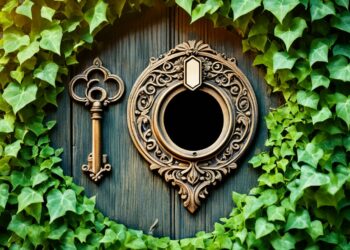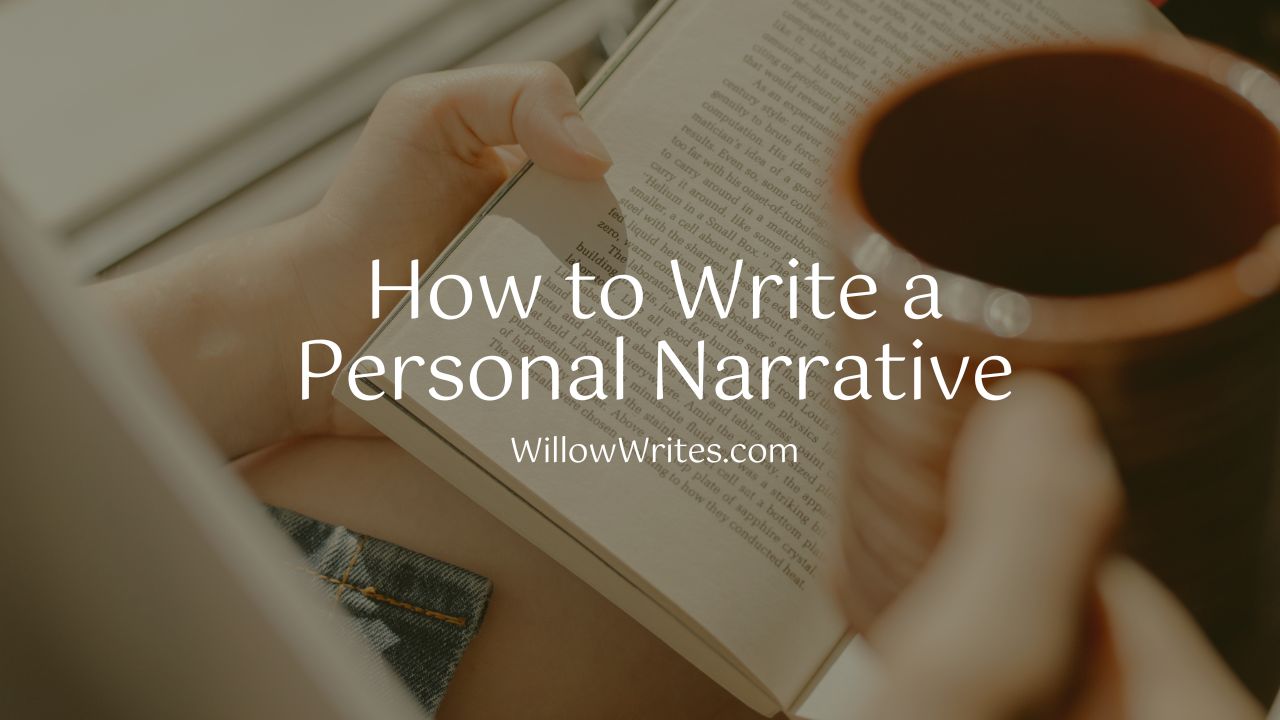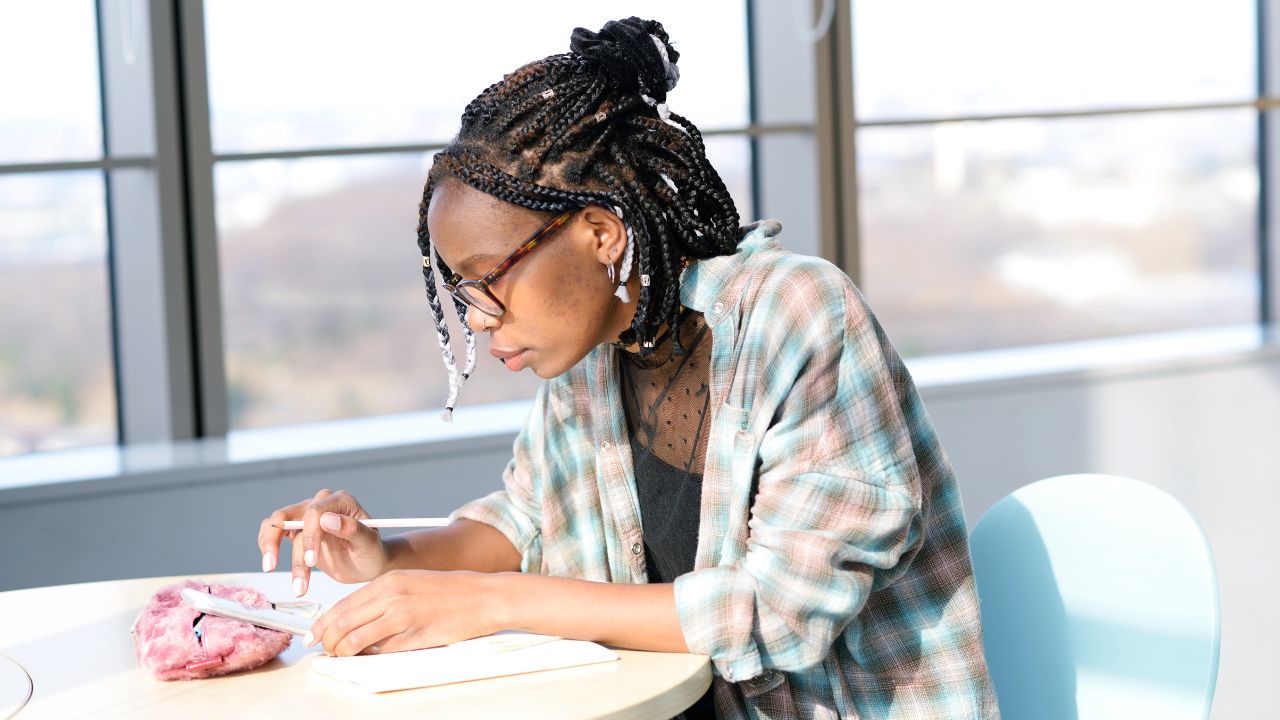In poetry, every word is carefully chosen to create a captivating and meaningful experience for the reader. And one powerful tool that can elevate your verses to new heights is the use of allusions. By integrating allusions into your poetry, you can bring depth, richness, and a sense of connection with well-known stories, characters, events, or works of art. Elevate your poetry craft by integrating a poem with an allusion, adding depth and richness to your verses.
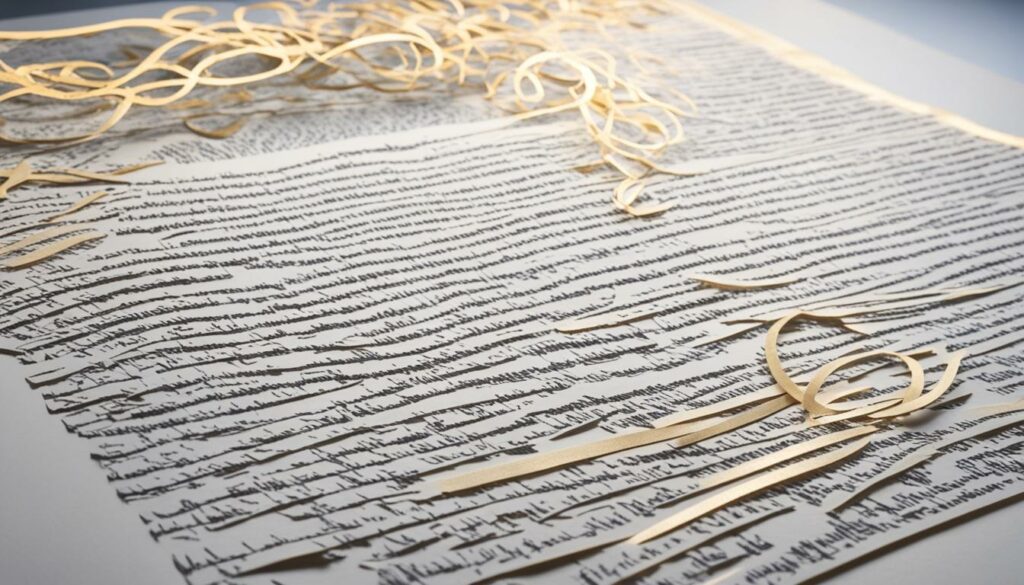
Key Takeaways:
- Allusions in poetry can add depth and richness to your verses.
- An allusion is a reference to a well-known story, character, event, or work of art.
- Using allusions in your poetry enhances poetic imagery and creates layers of meaning.
- Choosing the right allusion for your poem is crucial for its overall impact.
- Allusions can evoke powerful emotions in your poetry.
What is an Allusion in Poetry?
In poetry, allusion is a powerful tool that can enrich your verses with layers of meaning and cultural references. An allusion is a literary device where the poet refers to an external work, such as a historical event, mythological figure, or famous literary piece, to enhance the depth and impact of their own composition. It’s a way to tap into the collective knowledge and experiences readers share, evoking familiar emotions and associations.
Let’s delve deeper into the definition of allusions in poetry and explore some examples.
“In Xanadu did Kubla Khan
A stately pleasure-dome decree,”– From “Kubla Khan” by Samuel Taylor Coleridge
In the above excerpt, Coleridge alludes Xanadu, the capital of the ancient Mongol Empire, to create an air of mystery and grandeur in his poem. By referencing a historical place, Coleridge transports the reader to a distant time and place, adding richness and depth to his verse.
Why Use Allusions in Poetry?
Incorporating allusions into your poetry brings a multitude of benefits, enhancing the overall quality and impact of your verses. By referencing well-known stories, characters, events, or works of art, allusions can elevate your poetry to new heights of creativity and resonance.
1. Enriching Depth and Meaning
Using allusions allows you to tap into the rich catalog of human knowledge and experiences. By drawing on familiar cultural references, you can add depth and meaning to your poetry, creating layers of interpretation that engage readers on a deeper level.
2. Evoking Emotions and Memories
Allusions have the power to evoke strong emotions and memories in your readers. By referencing iconic stories or historical events, you can tap into shared cultural experiences, triggering a sense of nostalgia, familiarity, or resonance that adds an emotional dimension to your poetry.
3. Enhancing Engagement and Connection
Allusions provide a bridge between the poet and the reader, fostering a sense of connection and shared understanding. When readers recognize the allusions in your poetry, they feel a sense of intellectual camaraderie and appreciation for your literary knowledge, creating a stronger bond between the poet and the audience.
| Benefits of Using Allusions in Poetry |
|---|
| Enriches depth and meaning |
| Evokes emotions and memories |
| Enhances engagement and connection |
Furthermore, allusions can also serve as a form of homage or tribute to the works and artists that have influenced your own poetic journey. By incorporating allusions, you pay homage to the literary giants that have shaped the world of poetry, adding an element of intertextuality to your verses.
Embrace the power of allusions and unlock the potential of your poetry. Let these literary references infuse your verses with depth, emotion, and connection, captivating readers with their nuanced complexities.
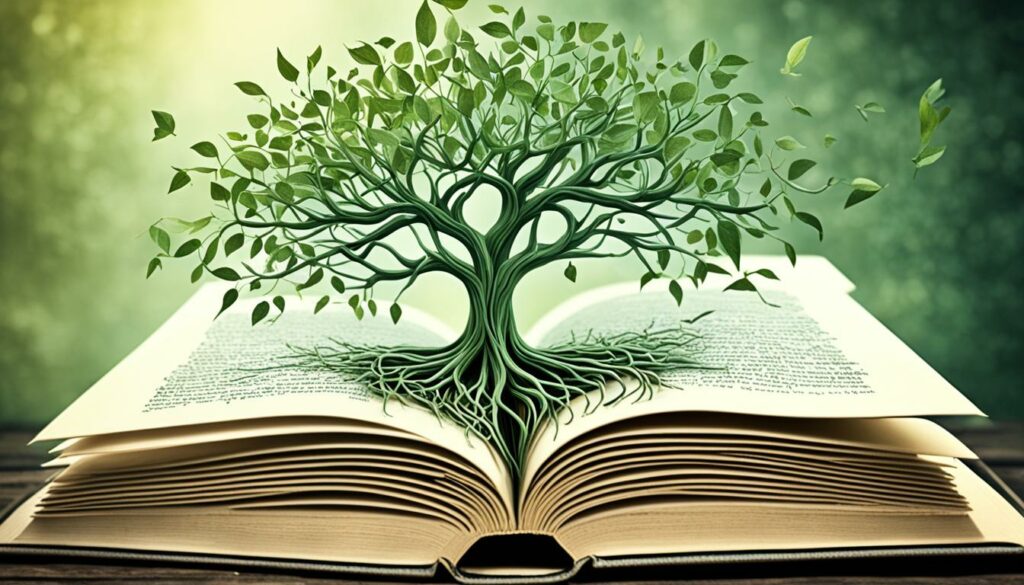
Types of Allusions in Poetry
When it comes to crafting poetic masterpieces, incorporating allusions can significantly enhance the depth and impact of your verses. Allusions in poetry are references to well-known stories, characters, events, or works of art that enrich the meaning and symbolism within a poem.
Let’s explore the different types of allusions commonly found in poetry, each contributing a unique flavor to the poetic composition:
- Cultural Allusions: These allusions refer to elements from culture, including literature, mythology, religion, philosophy, or popular culture. By drawing from a shared cultural background, poets can tap into the universal understanding and familiarity associated with these references, creating a connection with the reader.
- Mythological Allusions: Mythological allusions draw inspiration from ancient myths and legends, borrowing from gods, goddesses, heroes, and mythical creatures. Adding mythological allusions to a poem can add a sense of grandeur and timelessness, invoking powerful imagery and symbolism.
- Historical Allusions: Poets often reference historical events, figures, or periods to add depth and context to their verse. By alluding to significant historical moments, poets can evoke emotions associated with those events and explore themes of time, memory, and societal impact.
- Literary Allusions: Drawing from the vast library of literary works, poets can incorporate allusions to famous poems, novels, or plays. These allusions create intertextuality, establishing a dialogue between the poet’s work and the literary canon. It also invites readers to consider the connections between different works of literature.
By utilizing these various types of allusions, poets can infuse their verses with layers of meaning, evoke emotions, and create a rich tapestry of references that engage readers on multiple levels.
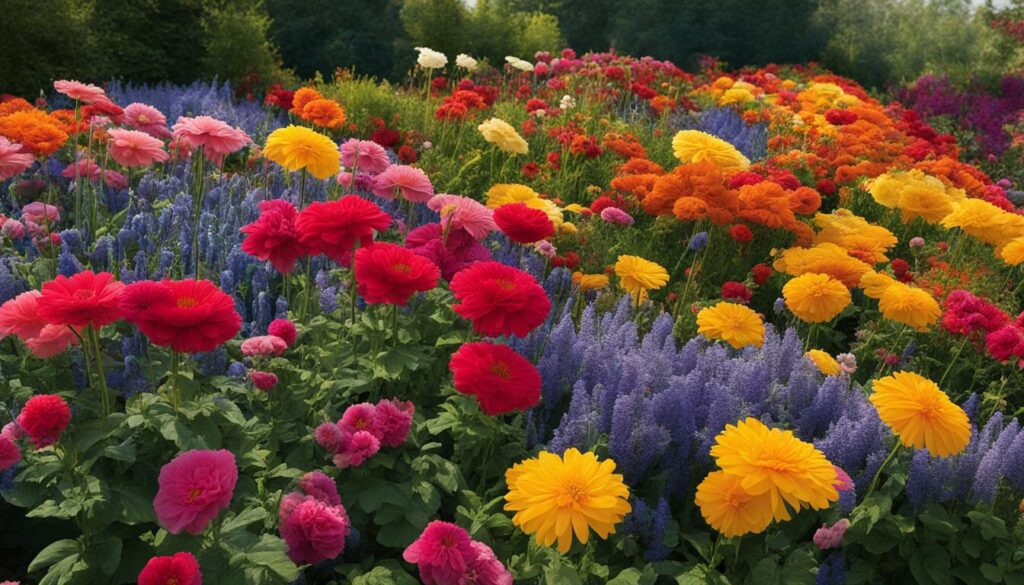
Through thoughtfully selected allusions, poets can transport readers to different worlds, invite them to contemplate complex themes, and immerse them in the beauty of language and imagery.
How to Choose the Right Allusion for Your Poem
Choosing the perfect allusion for your poem is a critical step in ensuring its overall impact. The right allusion can add depth, meaning, and resonance to your verse, captivating your readers and immersing them in your poetic world. To help you in this creative endeavor, here are some tips and strategies for selecting the most appropriate allusion to enhance your poetry:
- Understand your poem’s theme: Consider the central theme or message of your poem. Identify the key ideas or emotions you want to convey and explore how an allusion can amplify or complement them. For example, if your poem explores the theme of love, you might consider incorporating an allusion to a classic love story or an iconic romantic figure.
- Research extensively: Immerse yourself in literature, history, mythology, and art to broaden your pool of potential allusions. Familiarize yourself with famous works, significant events, renowned characters, and iconic symbols that resonate with your poem’s themes. This research will enable you to make informed and meaningful allusion choices.
- Consider your audience: Reflect on who will be reading or hearing your poem. Take into account their background, knowledge, and cultural references. Opt for allusions that will resonate with your intended audience, capturing their attention and enriching their understanding and appreciation of your verse.
- Create connections: Look for allusions that establish a strong thematic or emotional connection to your poem. Seek out references that enhance the meaning of your words, evoke specific moods or emotions, or add an element of surprise and intrigue. These connections will deepen the impact of your poem and create a memorable reading experience.
- Balance familiarity and uniqueness: Strive to strike a balance between allusions that are widely recognized and those that offer a fresh perspective. Incorporating well-known allusions can create an immediate sense of connection and recognition, while more obscure or lesser-known allusions can surprise and engage your readers, inviting them to embark on a journey of exploration and discovery.
By employing these tips and considering the nuances of your poem’s themes, audience, and desired impact, you can carefully select the ideal allusion that enhances your verse and elevates its poetic essence.
Take a moment to explore this visually engaging table, showcasing examples of well-chosen allusions in poetry:
| Allusion | Poem Title | Effect |
|---|---|---|
| The Phoenix | The Road Not Taken | Symbolizes rebirth and renewal, adding depth to the poem’s exploration of choice and regret. |
| Icarus | Musee des Beaux Arts | Elicits a contemplation of human suffering and the indifference of the world, enhancing the theme of empathy and human resilience. |
| Pandora’s Box | Hope is the Thing with Feathers | Invokes the idea of hope as a powerful force even in the face of despair, creating a juxtaposition that evokes emotional resonance. |

With these insights and inspiration, you are now equipped to embark on the poetic journey of choosing the perfect allusion to enhance your verse. Unleash your creativity, draw from the vast tapestry of human knowledge and experience, and craft poetry that resonates deeply with your readers’ hearts and minds.
Integrating Allusions Seamlessly into Poetry
Now that you have chosen an allusion, it’s time to learn how to effectively integrate it into your poem. By seamlessly weaving allusions into your verse, you can create a harmonious flow that adds depth and layers of meaning to your poetry.
When integrating allusions, consider the following techniques:
- Vivid Imagery: Use the allusion to enhance the imagery in your poem. Draw upon well-known symbols, settings, or objects to intensify the visual impact and create a more vibrant and engaging poetic experience.
- Interpretation: Ensure the allusion is clear and accessible to your readers. Provide context or a brief explanation if necessary, allowing them to fully grasp the intended meaning behind the allusion.
- Subtlety: Avoid overshadowing your poem with the allusion. Instead, strive for a delicate balance between the allusion and the rest of the verse. Let the allusion enrich the overall message without overwhelming it.
“Integrating allusions into poetry is like adding secret doors to your verse. When done right, the allusion becomes a hidden treasure that rewards the reader with deeper layers of meaning.”
Remember, the key to successful integration is to ensure the allusion organically fits within the flow of your poem. Take the time to craft your lines carefully, allowing the allusion to seamlessly blend with the rest of your words.
By skillfully integrating allusions into your poetry, you elevate your verses to new heights, creating a profound and captivating experience for both yourself and your readers.
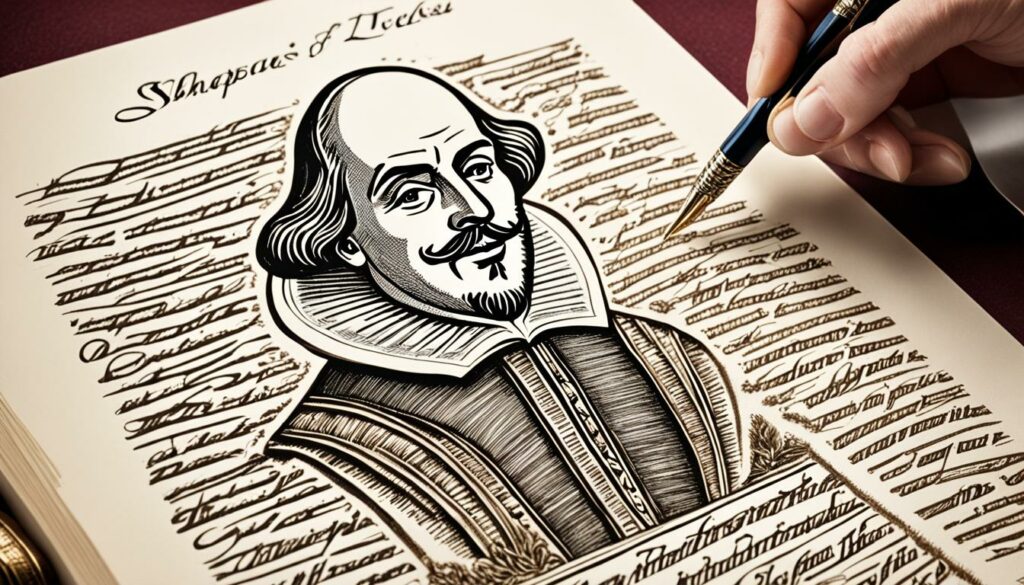
Enhancing Poetic Imagery with Allusions
One of the most powerful tools in a poet’s arsenal is the use of allusions, which can greatly enhance the imagery in their work. By referencing well-known symbols, settings, or objects through allusions, poets can intensify the visual impact of their verses, evoking vivid and captivating imagery in the minds of readers.
Just as a skilled painter uses brushstrokes to create a masterpiece, a poet carefully selects and employs allusions to add depth and layers to their poetry. Allusions provide a bridge between the poet’s words and the reader’s imagination, inviting them on a journey that connects the familiar with the poetic.
“And the star-spangled banner in triumph shall wave” – Francis Scott Key
Consider, for example, the allusion to the “star-spangled banner” in Francis Scott Key’s famous poem that would later become the United States national anthem. This single line instantly conjures up an image of the American flag waving triumphantly in the breeze, inspiring a sense of patriotism and pride. Through this allusion, Key paints a vivid picture in the minds of his readers, creating a powerful visual representation of the nation’s resilience and strength.
Similarly, poets may reference iconic figures, such as Greek gods or historical figures, to enrich their imagery and amplify the emotions conveyed in their verses. These allusions tap into our collective knowledge and understanding, allowing poets to draw upon a rich tapestry of ideas and associations that resonate deeply with readers.
“She walks in beauty, like the night
Of cloudless climes and starry skies”
– Lord Byron
In Lord Byron’s famous poem, “She Walks in Beauty,” the use of the allusion comparing a woman’s beauty to a cloudless night sky evokes a sense of awe and wonder. The visual imagery of radiant beauty against a backdrop of twinkling stars instills a sense of ethereal grace and charm, transporting readers to a realm of vivid imagination and poetic pleasure.
By enhancing their poetic imagery with allusions, poets can create a multisensory experience for their readers. These carefully woven references to familiar symbols and settings ignite the reader’s imagination, allowing them to see, hear, and feel the world depicted in the poem.
Through the strategic use of allusions, poets can transport readers to different eras, cultures, or even imaginary realms, expanding the boundaries of the reader’s perception and enriching their understanding of human experiences.
Unlocking the Visual Power of Allusions
Allusions have the remarkable ability to elevate the visual impact of poetry, bringing words to life in a way that captures the essence of the human experience. Whether through references to classic literature, historical events, or cultural icons, poets can infuse their verses with a poetic imagery that resonates with readers on a profound and emotional level.
By enhancing our understanding of allusions and their potential, we can truly appreciate the artistry in crafting poems with allusions. In the next section, we will explore the ways in which poets can create depth and layers through the skillful use of allusions.

Creating Depth and Layers through Allusions
Allusions have the remarkable ability to infuse your poetry with layers of meaning, bringing depth and complexity to your verses. By skillfully incorporating allusions into your work, you can evoke multiple interpretations and elicit a range of emotions from your readers. The art of crafting poetry with allusions allows you to tap into a rich tapestry of cultural references, literary works, and historical events, creating a profound connection between your verse and the broader world.
“Every poem should raise the hair on your arms and the back of your neck.”
Allusions are powerful tools that enable poets to achieve this level of emotional resonance in their work. By drawing upon shared knowledge and collective experiences, allusions invite readers to delve deeper into the layers of meaning within the poem. It is through these subtle references that poets create intellectual and emotional connections with their audience, enriching the overall poetic experience.
With allusions, your poetry gains a sense of universality, transcending individual perspectives and reaching a broader audience. The careful selection and placement of allusions can foster a deeper understanding of the human condition, allowing readers to relate to your words on a personal and profound level. Additionally, allusions can facilitate a dialogue between different works of literature, weaving a thematic thread that connects your poem to the larger tapestry of human creativity.
“Poetry is when an emotion has found its thought and the thought has found words.”
As you incorporate allusions into your poetry, consider the specific emotions you wish to convey, and select allusions that resonate with those emotions. For example, alluding to a well-known love story can invoke feelings of passion and devotion, while referencing a historical tragedy may elicit a sense of sadness or empathy. By leveraging the power of allusions, you can create a nuanced emotional landscape within your poetry, capturing the complexities of the human experience.
Expanding Perspectives: Allusions as Lenses
Allusions also serve as lenses through which readers can view familiar themes and ideas from new perspectives. By referencing established narratives or cultural touchstones, poets can challenge preconceived notions and inspire fresh interpretations. Allusions encourage readers to think critically and engage actively with the poem, allowing for a more immersive and thought-provoking reading experience.
Let’s explore an example:
In the poem “The Waste Land” by T.S. Eliot, the line “April is the cruellest month” alludes to the opening lines of Geoffrey Chaucer’s “The Canterbury Tales.” Through this allusion, Eliot juxtaposes the traditional association of April with rebirth and vitality, suggesting instead a barren and desolate landscape. By invoking Chaucer’s work, the allusion challenges the reader’s expectations and invites a reconsideration of prevailing literary conventions.
“Poetry is the revelation of a feeling that the poet believes to be interior and personal, which the reader recognizes as his own.”
By crafting poems with allusions, you open up a world of possibilities for your poetic expression. Through the strategic use of allusions, you can add layers of meaning, evoke diverse emotions, and invite readers to explore your verses from unique perspectives. The skillful integration of allusions enhances the richness of your poetry, elevating it from mere words on a page to a transformative and enlightening experience for both poet and reader alike.
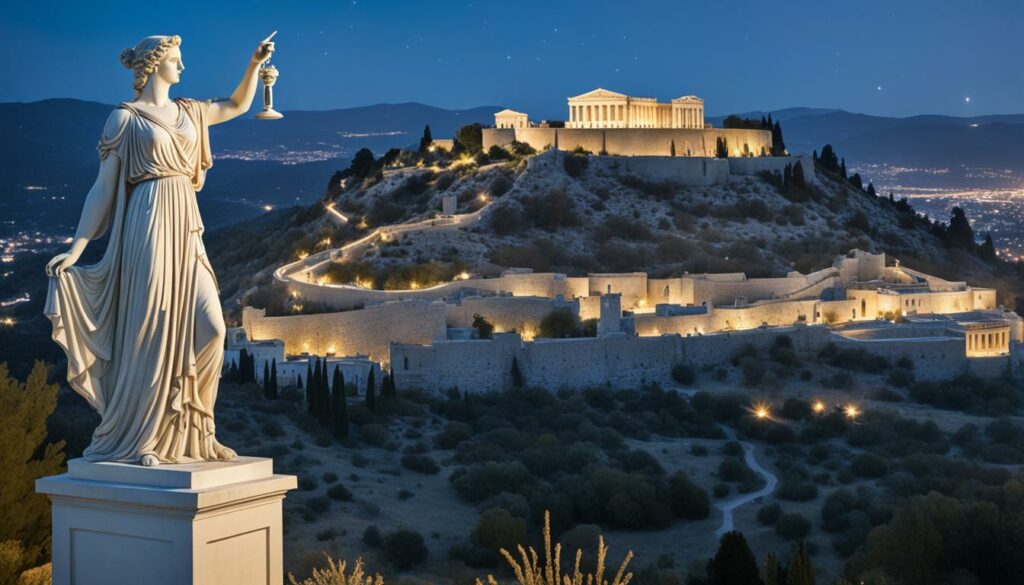
“A poet is, before anything else, a person who is passionately in love with language.”
| Allusions in Poetry | Benefits |
|---|---|
| Enhances the depth and complexity of verses | Invokes multiple interpretations and emotions |
| Connects poetry to a broader cultural and literary landscape | Fosters universality and relatability |
| Challenges preconceived notions and inspires new perspectives | Encourages critical thinking and active reader engagement |
The Power of Allusions in Conveying Emotion
Experience the transformative power of allusions in your poetry as they evoke profound emotions within your readers. By skillfully referencing established stories or cultural references, allusions can intensify the emotional impact of your verses, leaving a lasting impression on your audience.
“The greatest poems stir the depths of the soul with allusions that resonate in every heart.”
Allusions have the remarkable ability to tap into collective human experiences and tap into the universal truths that shape our emotions. When you integrate allusions into your poetry, you create a bridge between your reader’s emotions and the profound narratives embedded in established tales. This bridge allows your verses to resonate with readers on a deeply personal level.
Imagine a poem that alludes to the tragic love story of Romeo and Juliet. By referencing this iconic tale of forbidden passion and heartbreaking loss, you awaken familiar emotions within your readers. The allusion serves as an emotional anchor, connecting your audience to the timeless themes of love, sacrifice, and tragedy.

Elevating Empathy through Allusions
Beyond evoking emotions, allusions also enhance empathy in your readers. By utilizing allusions sourced from collective cultural experiences, you create a powerful connection that allows readers to relate to your poetic journey. As readers recognize the allusion, they draw on their own experiences and emotions, forging a bond between your poetry and their lived reality.
Creating Nuance and Complexity
Allusions add layers of nuance and complexity to your poetry, enabling you to explore profound themes and ideas. By referencing well-known stories, characters, or cultural touchstones, you infuse your verses with additional depth, offering readers multiple interpretations and perspectives to contemplate. The intertextuality of allusions broadens the scope of your poetic expression and encourages a thoughtful and nuanced engagement with your work.
Provoking Introspection
Allusions also invite readers to reflect on the connections between different texts and narratives. As readers encounter your allusions, they are prompted to consider the interplay between your poetic world and the wider literary landscape. This contemplation stimulates introspection, inspiring readers to delve deeper into the emotional and intellectual dimensions of your poetry.
| Emotional Impact | Key Benefits |
|---|---|
| 1. Evokes powerful emotions | 1. Connects with readers on a personal level |
| 2. Enhances empathy and relatability | 2. Creates a bridge between the poet and the audience |
| 3. Adds layers of nuance and complexity | 3. Encourages multiple interpretations |
| 4. Provokes introspection and reflection | 4. Stimulates a thoughtful engagement with the poetry |
Examples of Poems with Allusions
Explore a collection of renowned poems that effectively utilize allusions. Analyze these examples to gain inspiration and further understanding of the impact of allusions in poetry.
“The Hollow Men” by T.S. Eliot
“The Waste Land” by T.S. Eliot
“Ode to a Nightingale” by John Keats
“The Love Song of J. Alfred Prufrock” by T.S. Eliot
“The Second Coming” by W.B. Yeats
These poems exhibit masterful use of allusions to enhance their themes and imagery. They reference various literary works, historical events, and mythological figures to evoke emotions and create deeper layers of meaning. By studying these examples, you can gain valuable insights into the art of incorporating allusions into your own poetic compositions.
| Poem | Poet | Allusions |
|---|---|---|
| “The Hollow Men” | T.S. Eliot | The Bible, Dante’s Inferno |
| “The Waste Land” | T.S. Eliot | Shakespeare, Greek mythology |
| “Ode to a Nightingale” | John Keats | Mythology, Greek gods |
| “The Love Song of J. Alfred Prufrock” | T.S. Eliot | Dante’s Inferno |
| “The Second Coming” | W.B. Yeats | Christianity, mythology |
These poems demonstrate the power of allusions to engage readers, provoke thought, and enrich the overall poetic experience. By studying the use of allusions in these renowned works, you can gain inspiration for incorporating allusions into your own poetry, enhancing its depth, and connecting with readers on a deeper level.

Tips for Writing Poems with Allusions
When it comes to crafting poems with allusions, there are several tips and techniques that can help you create impactful and meaningful verse. Whether you are new to incorporating allusions or looking to enhance your existing skill set, these practical tips will guide you in the right direction:
- Read Widely: Expand your knowledge and exposure to different literary works, mythology, history, and art. This will provide you with a broader pool of allusions to draw inspiration from.
- Choose Relevance: Select allusions that are relevant to the theme, subject, or message of your poem. Look for connections that enhance the meaning or evoke a specific emotion.
- Create Subtle Connections: Incorporate allusions in a way that is not overly obvious or forced. Aim for subtle connections that enrich the reader’s experience without distracting from the overall flow of the poem.
- Research Allusions: Ensure you have a thorough understanding of the allusion you are using. Research its origin, context, and significance to accurately convey its meaning in your poem.
- Play with Layers: Experiment with using multiple layers of allusions to add depth and complexity to your poetry. This can create a richer reading experience and encourage readers to explore various interpretations.
Remember, the key to effectively incorporating allusions is to strike a balance between creativity and clarity. Allusions should enhance your poem and create deeper connections for the reader, rather than leaving them confused or overwhelmed.
By following these tips and allowing your creativity to flow, you can master the art of writing poems with allusions, creating verse that resonates deeply with your audience.
“The true poem rests between the words.” – Vanna Bonta

Refining Your Verse with Allusions
Once you have incorporated allusions into your poem, it’s essential to refine and polish your verse. Here are a few suggestions to help you refine your poem:
- Seek Feedback: Share your poem with trusted peers or mentors who can provide constructive feedback and suggestions for improvement.
- Edit and Revise: Review your poem multiple times, focusing on the flow, clarity, and impact of the allusions. Make necessary edits to enhance the overall quality of your verse.
- Consider Reader Perspective: Put yourself in the reader’s shoes and evaluate how the allusions contribute to their understanding and enjoyment of your poem. Adjust as needed to create a more engaging experience.
- Practice Patience: Writing poetry with allusions is a skill that takes time to develop. Be patient with yourself and embrace the learning process as you refine your technique.
By carefully considering each tip and refining your verse with allusions, you can create poems that captivate and leave a lasting impact on your readers.
Conclusion
Crafting poems with an allusion can truly elevate your verse and add a captivating depth to your poetry. By seamlessly integrating allusions into your compositions, you have the power to enhance imagery, evoke emotions, and create multi-layered meanings. Embracing the art of allusion allows you to unlock the true potential of your verses and take your poetry to new heights.
When you skillfully choose the right allusion for your poem, you are harnessing the power of well-known stories, characters, events, or works of art. This strategic incorporation not only adds richness and sophistication to your writing but also offers a pathway for your readers to deepen their understanding and connect with your work on a more profound level.
Furthermore, by integrating allusions seamlessly into your poetry, you can enhance the imagery within your verses. Through references to established symbols, settings, or objects, allusions intensify the visual impact of your writing, creating vivid mental imagery that resonates with your readers.
To create truly remarkable poems, allusions help you add layers of meaning and complexity to your work. With each allusion, you invite readers to explore various interpretations and interpretations, enhancing the depth and richness of your poetry. This nuanced approach leaves lasting impressions and cultivates a deep appreciation for the artistry of your words.
FAQ
What is an allusion in poetry?
An allusion in poetry is a literary device that refers to a well-known person, event, story, or work of art. It adds depth and meaning to the poem by engaging the reader’s familiarity with the referenced subject.
Why should I use allusions in poetry?
Allusions can elevate your verse by drawing upon established stories, characters, or cultural references. They enrich your poetry with layers of meaning and evoke powerful emotions, enhancing the overall impact of your work.
What are the different types of allusions in poetry?
There are various types of allusions commonly found in poetry, including mythological allusions, historical references, biblical allusions, literary allusions, and pop culture references. Each type offers unique opportunities for adding depth and resonance to your verse.
How do I choose the right allusion for my poem?
Selecting the right allusion requires considering the theme, mood, and imagery of your poem. Start by identifying the message you want to convey and then find an allusion that complements or enhances it. The chosen allusion should resonate with your intended audience and add significance to your verse.
How can I integrate allusions seamlessly into my poetry?
To seamlessly integrate allusions into your poetry, consider the context and syntax of the referenced subject. Avoid abrupt transitions and ensure that the allusion flows naturally within your verse. By maintaining a harmonious balance between the allusion and the rest of your poem, you can create a cohesive and engaging composition.
How can allusions enhance the imagery in my poetry?
Allusions can intensify the visual impact of your poetry by referencing well-known symbols, settings, or objects. By leveraging the reader’s familiarity with these references, you can create vivid and evocative images that transport your audience into the world of your poem.
How can allusions help create depth and layers in my poetry?
Allusions can add layers of meaning to your poetry by inviting multiple interpretations and associations. They create depth and complexity by connecting your poem to existing stories, cultural references, or historical events. This richness allows readers to discover new layers of understanding each time they engage with your verse.
How do allusions convey emotion in poetry?
Allusions can evoke powerful emotions by tapping into established stories or cultural references that carry emotional weight. By referencing beloved characters, tragic events, or nostalgic moments through allusions, your poetry can resonate deeply with readers, eliciting a range of emotions.
Can you provide examples of poems with allusions?
Some notable examples of poems that effectively use allusions include T.S. Eliot’s “The Waste Land,” which alludes to various mythological and literary works, Sylvia Plath’s “Lady Lazarus,” which references the biblical character Lazarus, and Langston Hughes’ “A Dream Deferred,” which alludes to the American dream. These poems showcase the power of allusions in adding depth and resonance to verse.
What are some tips for writing poems with allusions?
When crafting poems with allusions, it is essential to research and understand the referenced subject thoroughly. Consider the context and significance of the allusion, ensuring it aligns with the overall theme and message of your poem. Additionally, strive for clarity, making sure your readers can perceive the intended meaning behind the allusion.





